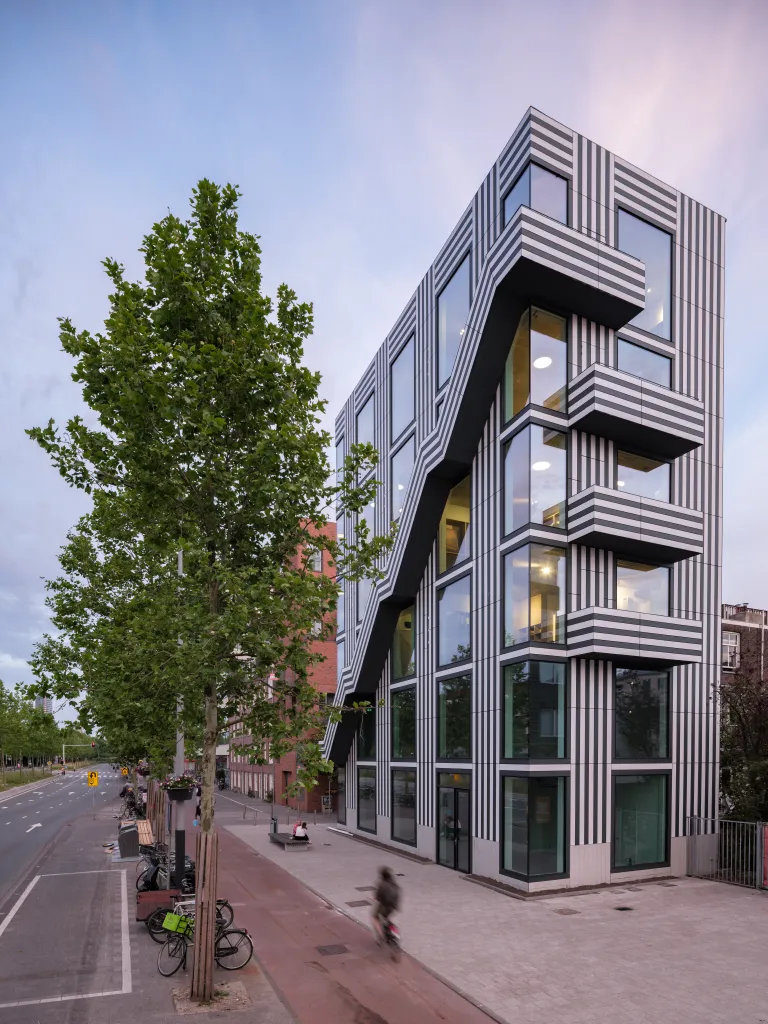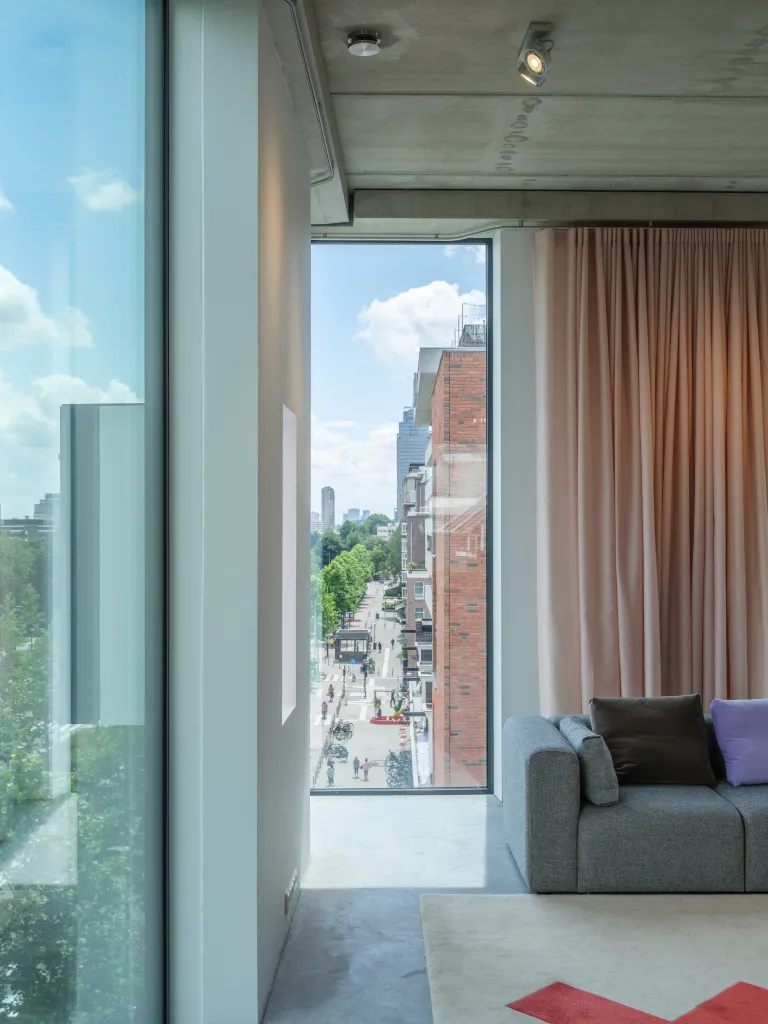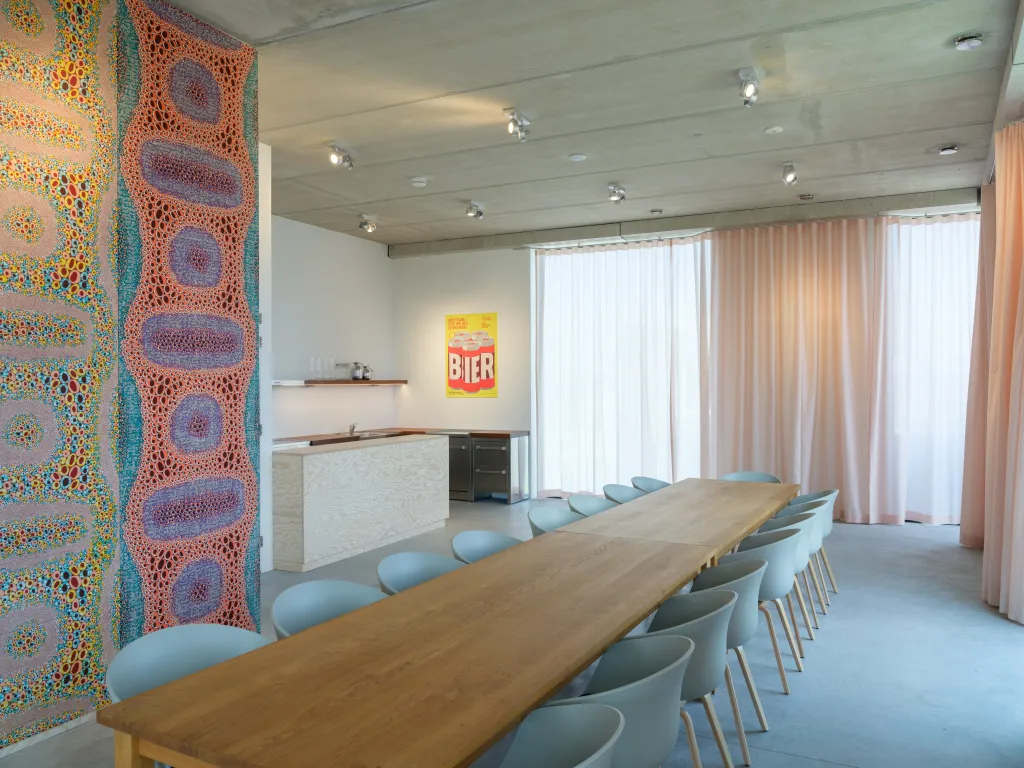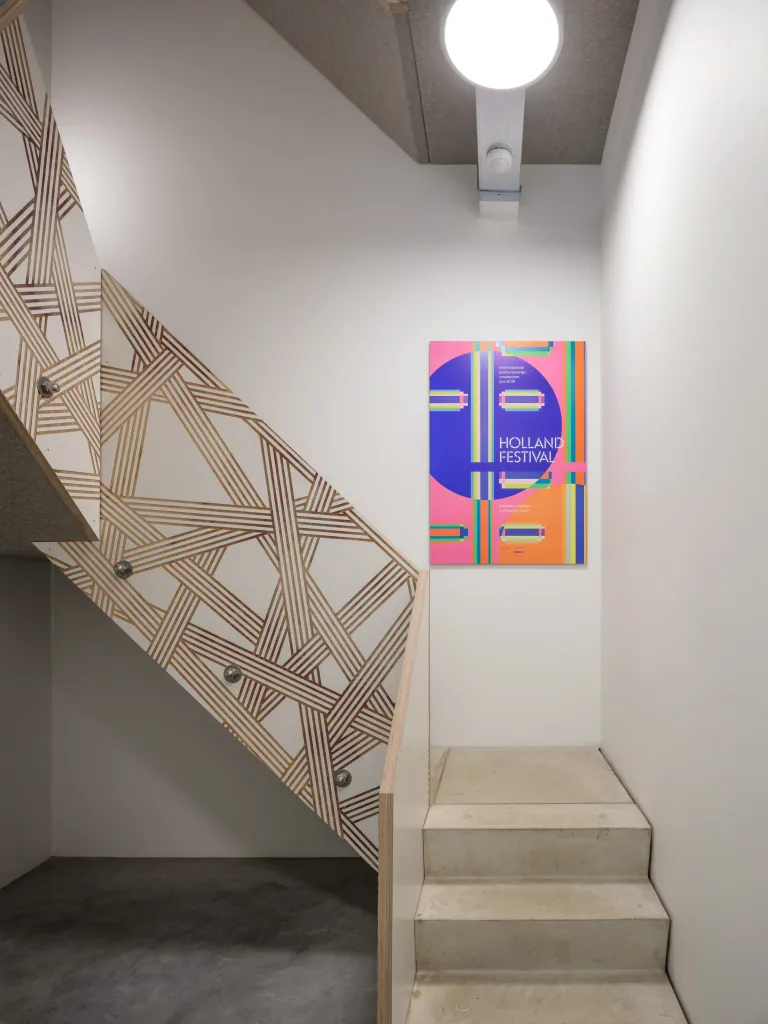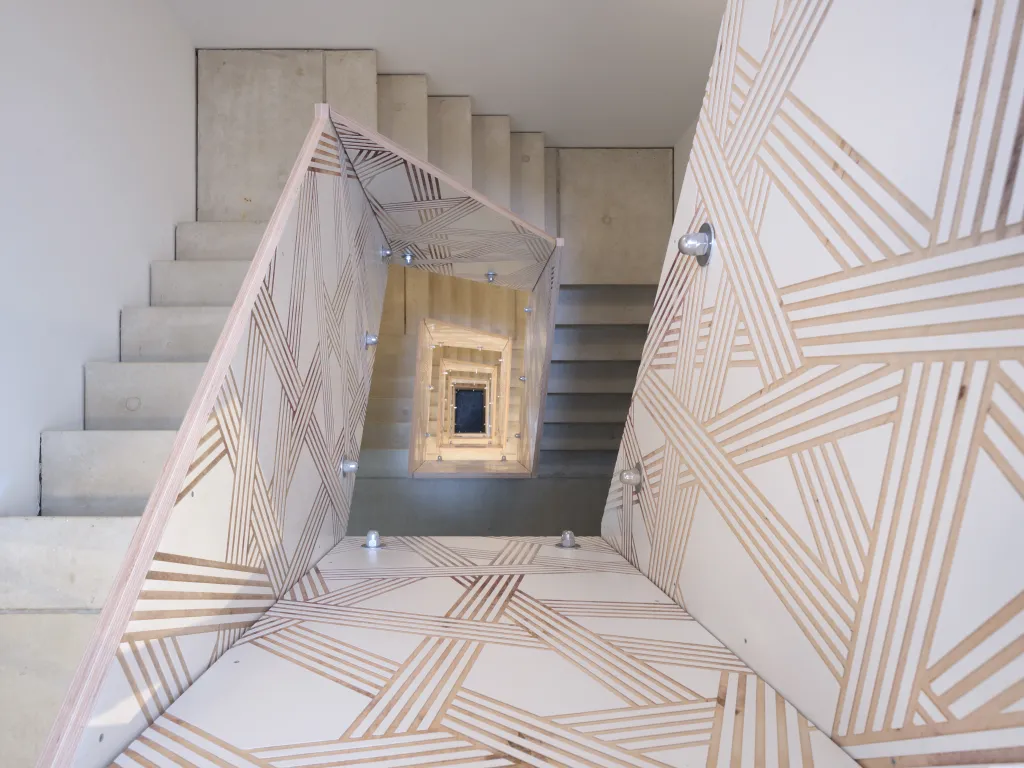Just as the exterior stair and balconies, the corner windows offer ‘eyes on the street’ which underline the building’s connection with its environment. The restaurant downstairs, which will activate the plinth of Wibautstraat, adds to the urbanity of this project, and the street for that matter.
For decades the Wibaustraat had been a car-oriented urban highway following the contours of the former railroad, which was demolished in the 1940s. Whereas a few buildings along the street predate its postwar creation, the majority is constructed since the 1950s and comprises a unique collection of individual, and individualistic buildings. It ranges from Friedhoff’s majestic brick traditionalism and a Corbusian tribute by Ingwersen and De Geus, to a brutalist complex by Van den Broek and Bakema and a diversity of urban renewal housing from the 1970s onward.
When the Wibautstraat was first and foremost a traffic artery, its architecture often seemed an inconspicuous backdrop for the passing motorists. The widening of the sidewalks, at the expense of car parking, and the redesign of the road itself, has shifted the street’s emphasis to pedestrians and bikers, in other words to city life. It also has given the buildings along the Wibautstraat more prominence, revealing their previously unheralded personalities. In this respect Thonik’s characteristic building is very contextual in a setting where architectural diversity prevails.
The Wibautstraat has become a more normal urban environment now it is no longer predominantly serving motorized traffic, but it is still not your typical Amsterdam street, even if it is difficult to say what that would constitute nowadays, given how gentrification and touristification has usurped larger parts of the centre of Amsterdam. The Wibautstraat is certainly not immune to these changes. After all, its recent transformation is the product and expression of gentrification, and even a bit of touristification as well. But the street is, and will remain, one of a kind: unmistakably part of Amsterdam, yet absolutely exceptional in comparison to the rest of the city. The same is true for this extraordinary building, which is therefore totally in its element in the Wibautstraat.
